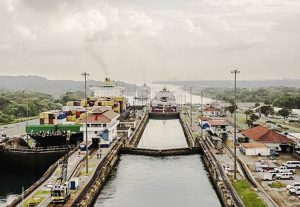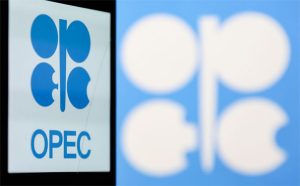
By Einstein Millan Arcia
Analysts from S&P Global Commodity Insights [ Exxon Plans to Drill Up to 30 Wells for its Seventh Oil Project in Guyana ] reported last month that the Guyana Basin contains 18.7 billion barrels of recoverable resources. This is a contradiction by definition, as resources are still to be economically proven to be able to confirm or deny its condition of “recoverable” reserves.
Last week Guyana minister of Natural Resources Vickram Bharrat addressed this estimation by S&P Global saying that it was false, not true, and expressed that current “resource estimates” are instead “11.6 billion barrels of oil” [ Despite 8 new discoveries, Govt. claims Guyana’s oil reserves only grew by 600M – Kaieteur News ].
But these resources are actually referred by Exxon as barrels of oil equivalent [ ExxonMobil makes final investment decision on fourth Guyana offshore project ] which is different to barrels of oil. A barrel of oil equivalent is composed not only by crude oil, but by gas equivalent converted to crude oil in terms of its calorific value or the amount of energy that can be produced.
Furthermore, at the end of the economic life of any asset, resource estimates normally overestimate actual recoverable reserves in over 60% of the initial figures, as a result of inherent uncertainties surfacing during the exploration, appraisal, and development stages of a given asset. This brings the most realistic scenario for the Guayana proven hydrocarbon reserves to between 5.000 to 4.500 million equivalent oil barrels (MMBOE) in the best-case scenario.
As we previously mentioned these are “equivalent barrels”, meaning that gas reserves have been accounted for as equivalent oil barrels. Because the hydrocarbon gas is not included as a source of revenue for Guyana in the Production Sharing Agreement (PSA), these equivalent barrels need to be erased from the bulk reserves figure.
Based on the typical initial gas oil ratio of around 620 to 660 ScF/StB for these fields, most likely “net recoverable volume of crude oil” for Guyana Stabroek could be conservatively in the range of 4.000 to 3.500 MMBOE.
But complexities has nevertheless surfaced since first oil in December’2019, signaling accelerated early depletion. Free gas has been rapidly liberated from within the reservoir since production inception, unveiling the fact that these assets are limited, volumetric, and that, all produced fields so far on production within the Stabroek block, are in saturation equilibrium at initial conditions.
In spite of ongoing combined water-gas injection in all 3-active assets; Liza-I, Liza-II, and Payara, GOR progression suggests that free gas not only shows early during production, but rapidly evolves towards disequilibrium.
For the case of Liza-I, GOR prior to Liza-II production reached 1.404 ScF/Stb. For the case of Liza I plus Liza II, GOR evolved towards 1.394 ScF/Stb prior to Payara production. Currently, the 3 combines assets are producing at an average GOR of 1.250 ScF/Stb and increasing. Clearly, GOR has rapidly grow from initial conditions 660 ScF/StB, to over 1.400 ScF/StB, representing over a 112% increase in a matter of a few months.
The way these developments are phased considering its volumetric nature, will hardly translate into a long-term-sustainable-production-plateau, but instead into a short-term peak profile, which could lead to a rapid drop towards a much lower production level, as the reservoir tends to bleed-off under an unresponsive fluid injection, as it has been the case so far. Furthermore, if pressure drops consistently, a number of formation-damage-related-phenomena will beguine to unleash targeting well productivity as its first victim.
Clearly Exxon was not aware of this prior, and during the final investment decision [FID]. Design specifications varied considerable between phase I and II from 1,260 to 1,820 ScF/StB, signaling that Exxon was expecting more free gas to be produced than initially anticipated during Liza phase-I.
Among the main reasons for this rapid acceleration of the gas liberation in spite of gas-water injection are; poor injectivity, low fluid replacement ratio, high oil-gas withdrawal rate, and/or fluid dispersion outside the active portion of the reservoirs, as it is well known that most reservoirs in this area are highly compartmentalized.
Assuming that Liza I, Liza II, and Payara are “the real beef” of Stabroek, the consequences of all this evidence exposed before, will be seen in the next 5 years after the remaining “attractive reservoirs” are incorporated into production. These consequences include mainly; a short and unsustainable production plateau, large volumes of gas produced, uncontrolled gas flaring, and high cost-to-profit ratio.
This is the main reason why Exxon is pushing for the gas-to-short thermo-electric project, which by the way has cost so far over $520 millions to the guyanese people since 2022. Exxon is only financing the 190 kilometer pipeline; the rest; including taxes is paid for by the guyus. A very expensive pipeline, considering typical offshore pipeline cost ranges between $3.5 to $4 million per kilometer at full cost, equating into a $660 to $760 million figure. No wonder why the guyanese government has been reluctant to release the heads of agreement [HOA] signed with the Stabroek copartners Exxon, Hess, and CNOOC, about the gas-to-shore project. This money is in reality helping Exxon to get rid of the excess gas to be soon produced. Although Exxon claims is currently utilizing, and injecting most of the gas produced, the region must be prepared to face large volumes of toxic emissions to the atmosphere from Exxon Guyana, and pay the environmental consequences in the next few years to come.
__________________________________________________________________________________
Einstein Millan Arcia is a Senior Upstream Oil & Gas Global Adviser, and Reservoir Engineering Subject Matter Expert with over 40 years of successful exposure in the oil industry. Currently he is the Managing Director for Energy and Carbon Sequestration @ Fractal Software- Multiple Industries. Flexible Solutions (fractal-software.com); a Big Data, Artificial Intelligence start up, also specialized in energy consulting. Mr. Millan has been C-level manager with PDVSA and Advisor/Consultant to YBPF-Bolivia, KOC-Kuwait, PEME-Mexico, Schlumberger, and Core laboratories among others. He holds a Petroleum engineering degree from the University of Oriente-Venezuela, Master of Science degree in Petroleum Engineering, and PhD level specialization courses in Fluid Flow through Porous Media, both from the University of Oklahoma. He has been exposed to several Oil & Gas assets worldwide; including Middle East, México, EEUU, Bolivia, Colombia, Ecuador, and Venezuela. He has published over 11 highly specialized technical papers internationally, and more than 300 energy related articles in a number of journals, blogs and newspapers. At present is . Energiesnet.com does not necessarily share these views.
Editor’s Note:All comments posted and published on EnergiesNet.com, do not reflect either for or against the opinion expressed in the comment as an endorsement of EnergiesNet.com or Petroleumworld.
Use Notice: This site contains copyrighted material the use of which has not always been specifically authorized by the copyright owner. We are making such material available in our efforts to advance understanding of issues of environmental and humanitarian significance. We believe this constitutes a ‘fair use’ of any such copyrighted material as provided for in section 107 of the US Copyright Law. In accordance with Title 17 U.S.C. Section 107. For more information go to: http://www.law.cornell.edu/uscode/17/107.shtml.
EnergiesNet.com 19 08 2024











